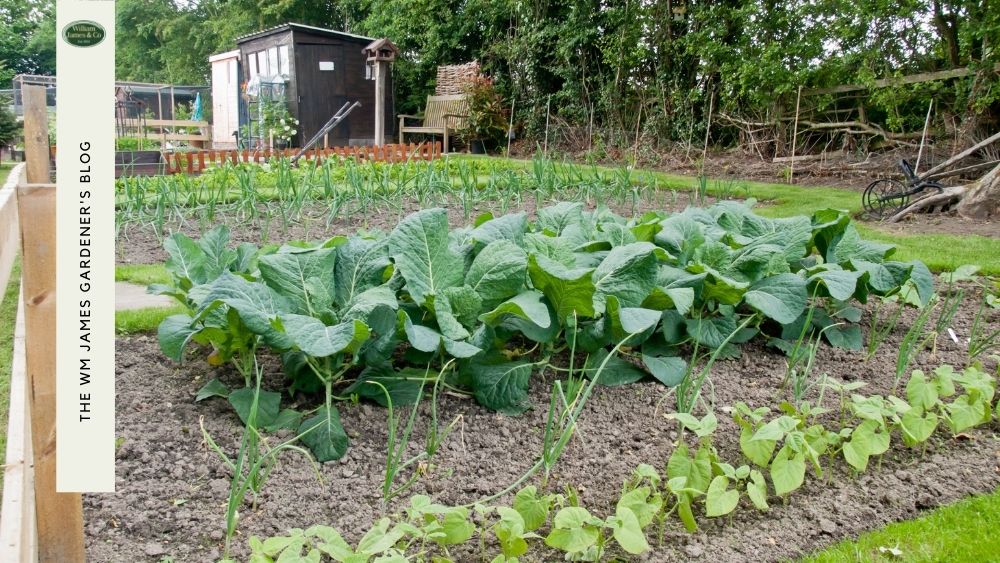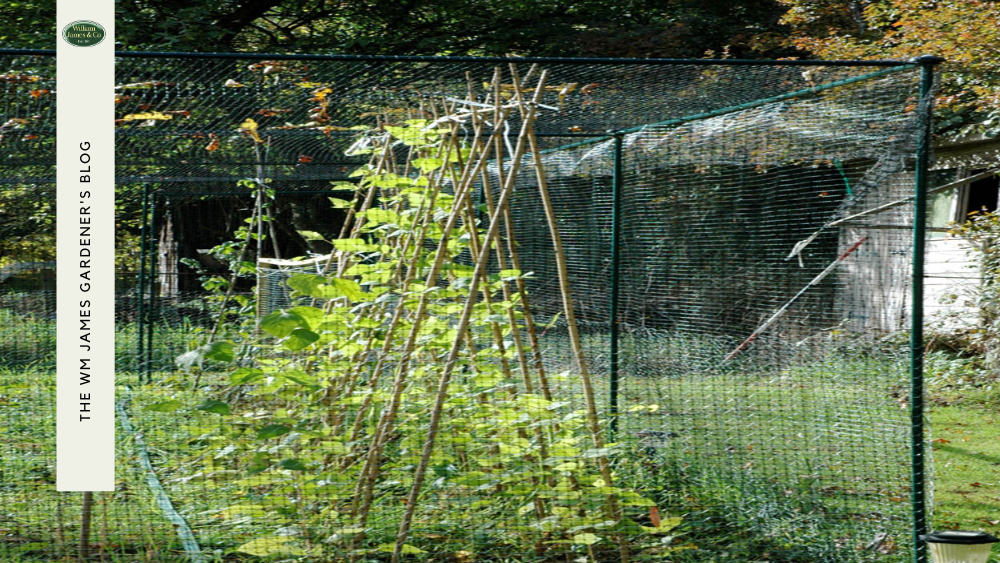We use cookies to make your experience better. To comply with the new e-Privacy directive, we need to ask for your consent to set the cookies. Learn more.
Allotments for Beginners: How to Get an Allotment
- Admin
- WM James Gardening Blog
- 18 Jan 2021
-
10views

For this blog post on allotments for beginners, we spoke to our local town council to find out the best way to approach getting an allotment. Getting an allotment can take time, so it's useful to know your alternatives if you’re on a council waiting list. Many of us often consider getting an allotment and never make the commitment, so think of this as a brief guide to understanding allotments for beginners.
How To Get An Allotment
The starting point for getting an allotment and planning an allotment is to find out who is the main provider in your area. This will often be the local council, either a town or parish council, or possibly a district or city council.
Various voluntary membership associations and societies can share their knowledge on getting an allotment and planning an allotment. For example, the Town Council sponsors Bridport and District Allotments Society. It exists to protect the interests of current and potential allotment holders. They are a good source of information on how to get an allotment.
The Society maintains close contact with the main provider of allotments, Bridport Town Council, and neighbouring parish councils. Good relations between the Society, the councils and local landowners has resulted in one of the country’s fastest expanding supply of plots. Even so, wherever you are in the country, getting an allotment is hard because plots are often limited.
Choosing The Best Type Of Allotment
Planning an allotment will involve understanding the rules and regulations governing the particular plot you wish to have access to. So before you can get your hands dirty, there’s some red tape and admin to get to grips with. Planning an allotment takes brains as well as brawn.
Allotments for beginners and experienced growers can be found on private, community and council-owned land. So choosing and planning an allotment is not just about whether it’s south-facing or what the soil is like. You need to understand the terms and conditions first!
While local authorities provide most allotments for beginners, you can rent from private landlords and community groups. These include, for example, organisations like the Church of England and the National Trust. When planning an allotment, it is important to know they are managed differently according to the site.
For this reason, and when the focus is on beginners, it helps to be in touch with your local association. They will advise on relevant topics like allotment legislation, health and safety, environmental issues, contractual problems and how to handle disputes.
Aside from the red tape, and especially when it’s about allotments for beginners, the best allotment surely must be the one that is closest to your home. Preferably a short walk as you want to minimise the travelling time to take equipment and bring back your harvest.
Applying For An Allotment
Availability is key, and usually there’s a waiting list for an allotment. Research conducted in 2019 shows 90,000 people on waiting lists for plots across 300,000 council-run allotments in the UK. In 2020 applications soared as lockdown gave people more reasons to get outside and grow their own fruit and veg. One English council reported a 300% increase in applications.
Average waiting times can be six to eight months, with a small proportion (12%) of authorities able to guarantee a plot within six months. Most councils say the average waiting time is eighteen months, with waiting lists numbers amounting to hundreds of people.
In terms of priority for getting an allotment, local residents/ratepayers of the parish will usually receive preference. Double fees can apply to applicants outside the parish. The annual rent for an allotment can range from £5 to £125. And there may also be registration charges to cover costs like key cutting. Typically the landlord is responsible for the provision of water and payment of water rates and general maintenance.
5 Allotment Tips And Ideas While Your Waiting
With waiting lists of over a year, there's enough time to get on with planning an allotment layout. And with allotments for beginners it’s maybe surprising how much time and effort is required. So, before you start the physical work, set a budget and decide how much time and money you have to spend. Also think about what help and other resources you may need. If you're planning to share the work, ask your partner for allotment layout ideas. Taking on an allotment does take a lot of commitment of time and some money. Typically you will need to put in a minimum of at least a couple of hours a week to do it properly.
Visit the site of your Allotment
To inform your allotment layout ideas, it’s essential to know what you’re working with. Surveying the whole site and allotment layout will start to inspire allotment layout ideas. You’ll get an idea of soil type, which way the location faces and how much sun it receives. Looking at what people are growing on the plots will give you some focused allotment tips and ideas. Bear in mind though; a plot is likely to be suffering from neglect and overgrown when you take it on. So your allotment layout ideas may have to go on hold while you clear and dig during the first season. Knowing all of this and what you’re working with will help when developing your allotment layout ideas.
Planning an Allotment
When you’re ready, it pays to sit down with pencil and paper and adequately plan out your allotment layout ideas. Mainly you will want to decide what to grow and where on the overall allotment layout. You may also want to add a small shed for storage or a greenhouse to bring things on. So, be sure to check your tenancy agreement to confirm the rules on size. Some crops will require additional equipment. For example to grow fruit, you will need a permanent location and in most cases some form of fruit cage and netting to protect the fruit from birds.
A bed system with a network of paths to access crops is a popular allotment layout. Alternatively, you can plant crops across the whole width of your plot, one of the most productive allotment layout ideas. With your allotment layout, think about how you won't want to grow the same thing in the same place. For allotment tips and ideas on this, see our blog post on crop rotation plans.
Get Your Equipment Ready
Make a list of what you have and what you might need. Find out if there are communal tools you have access to at the allotment. It’s tempting to think about keeping on-site all the items such as tools, pallets, fabrics and wooden frames. But don't fill up the plot with clutter as everything will begin to look untidy. There's a lot of pride around amongst allotment associations. So, being a good plot neighbour and keeping things neat and tidy is a virtue. And one of the more popular allotment tips and ideas. In practice this means removing accumulated rubbish from site on regularly and not allowing it to build up.
Start Growing Small Plants at Home
One way to pass the time while the waiting list ticks down is to start growing plants indoors or in your greenhouse. This way, you have something to plant when your allotment becomes available. Local nurseries will always have a selection of vegetable plants to start you off. Alternatively, you could have the satisfaction of growing from seed. Most vegetables can be successfully grown in pots or other growing containers providing you use a nutrient-rich compost. If you are growing vegetables in a small space, make sure you use the biggest pot you can. And the right compost otherwise they will dry out too quickly, and your plants will struggle. See our blog post on the subject. When your allotment plot becomes available simply transfer to the ground.
If Possible, Get To Know Your Allotment Neighbours
Allotment gardening offers a companionable way to spend time doing something different and away from home. Many allotment holders find working their plot is an excellent way to relieve stress. And they enjoy the benefits of a community environment. If you pay a visit to the allotment site in advance, you can meet your potential plot neighbours. Most likely they will be experienced gardeners of all ages and be pleased to offer you advice and guidance. They will undoubtedly know what grows well. They can help you with your allotment layout ideas. They might provide some inside knowledge on how to get an allotment. And you might be able to work together to grow complementary crops for a broader range of vegetables and plants.
Allotment Alternatives
If the waiting list for a council allotment is a very long time and you're wondering just how to get an allotment, then these are our top alternatives for keeping sane while you’re waiting.
- Explore how to get an allotment from local private landlords and organisations like the National Trust or Church of England
- Answer the question how to get an allotment by spotting any vacant land which would make a good allotment.
- If there are no allotments in your area get an allotment by finding five like-minded people who want one and submit a formal letter to the local council requesting they make provision.
- Work with what you have at home by creating a vegetable patch in your home garden. Or grow plants indoors, on your patio or your balcony.
- Volunteer in local community or charity gardens if you really must get out amongst the plants. They will be grateful for your support.
In Summary
Planning an allotment and getting an allotment is an exciting and rewarding activity. It will lead to many happy hours engaging with nature and working outdoors. In this introduction to allotments for beginners, we have sought to bring together allotment tips and ideas for how to get an allotment and to suggest some allotment layout ideas.
Managing your allotment can be challenging, keeping up with your growing calendar, planting and maintenance. Surprisingly allotments are the only leisure activity with their own legislation. The community of people in an allotment site can inspire strong and positive feelings. We hope this post will give you some insight into how to get an allotment and, when you do, what to do with it.











